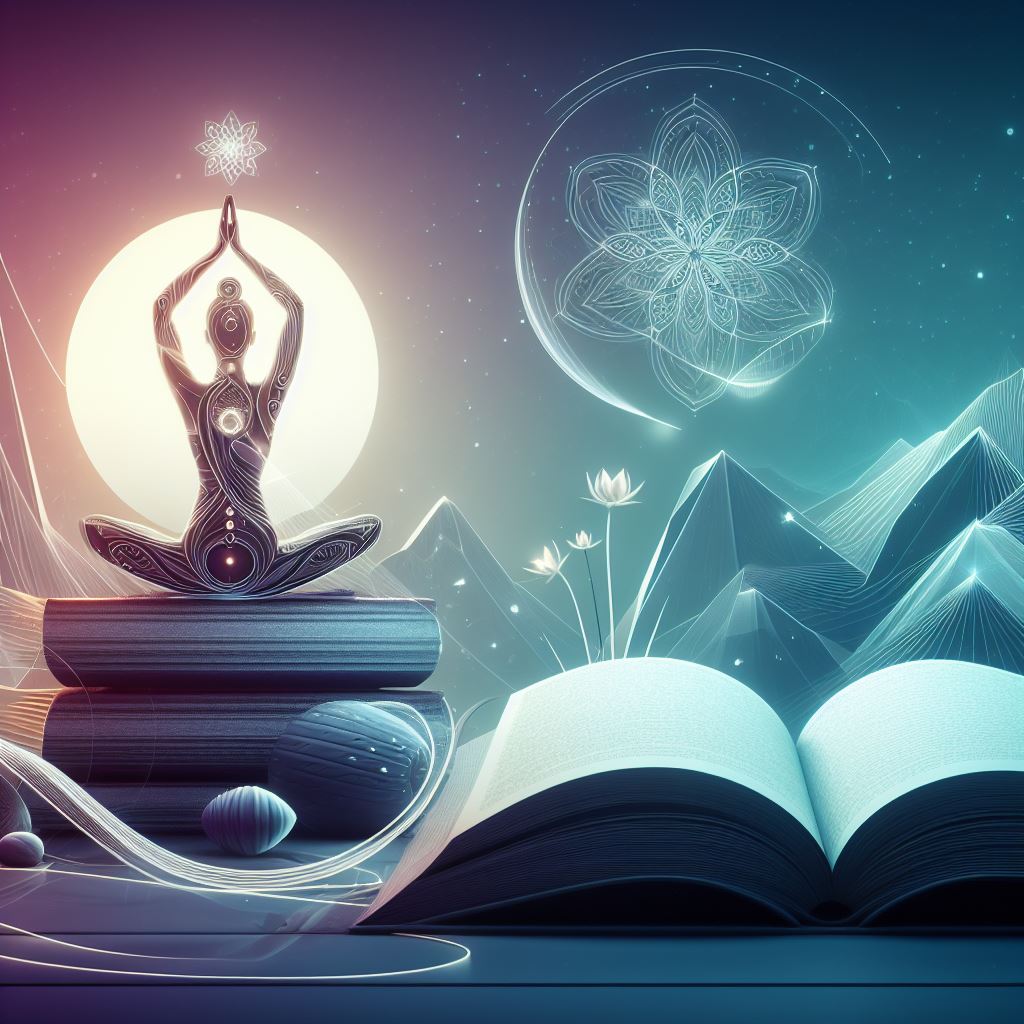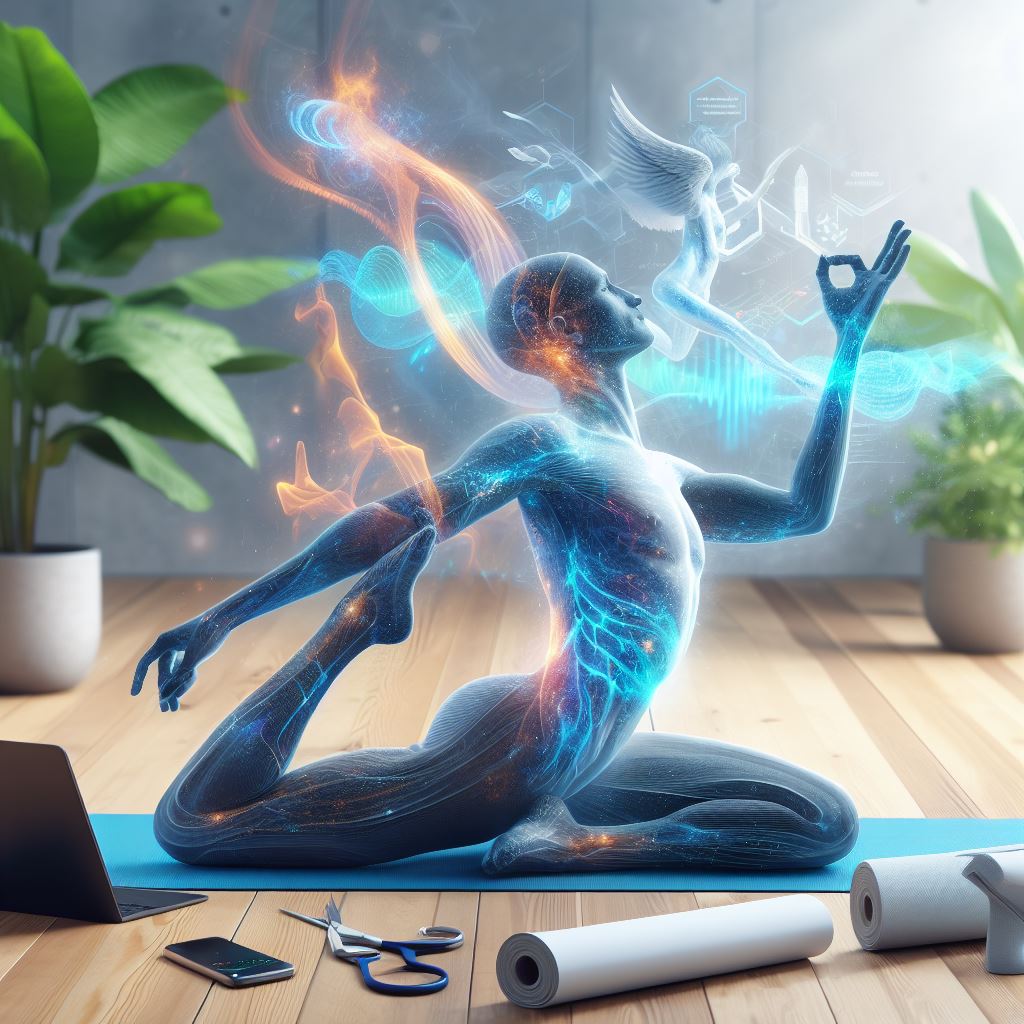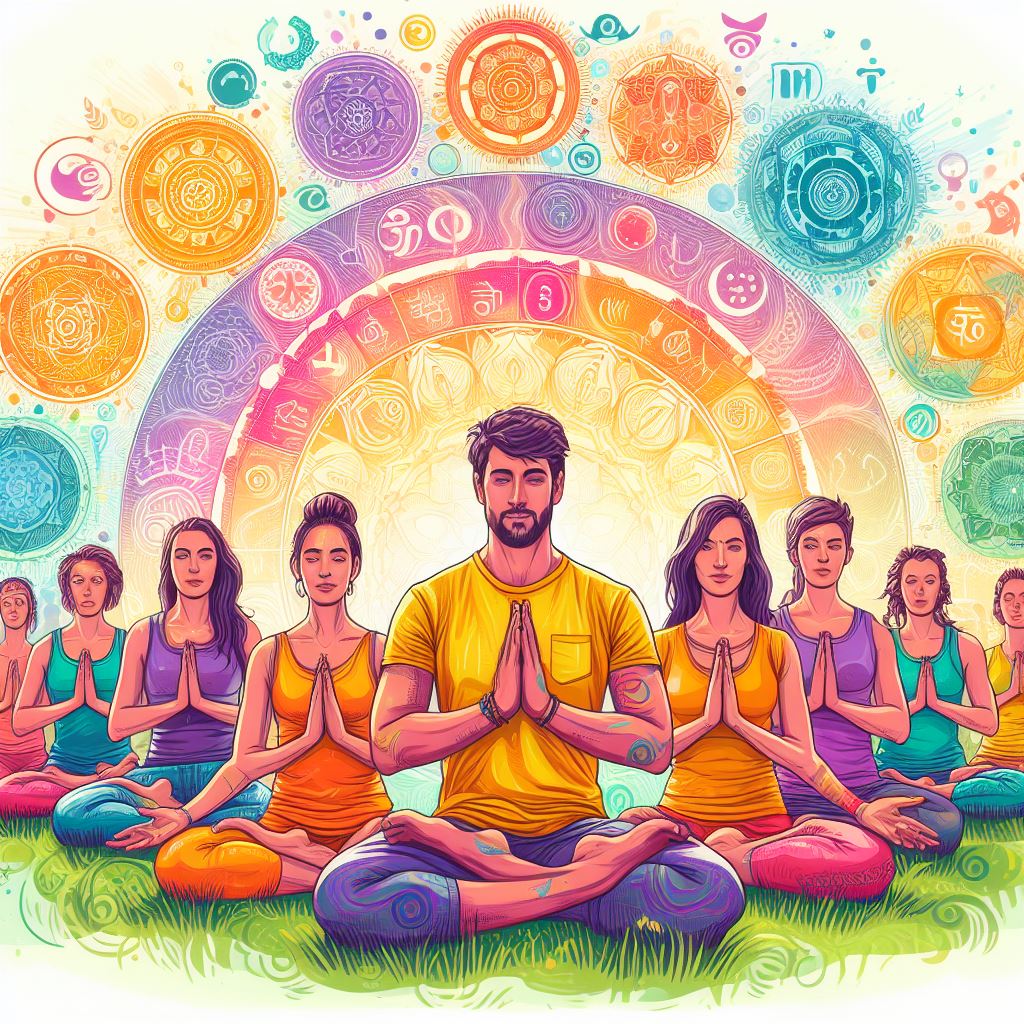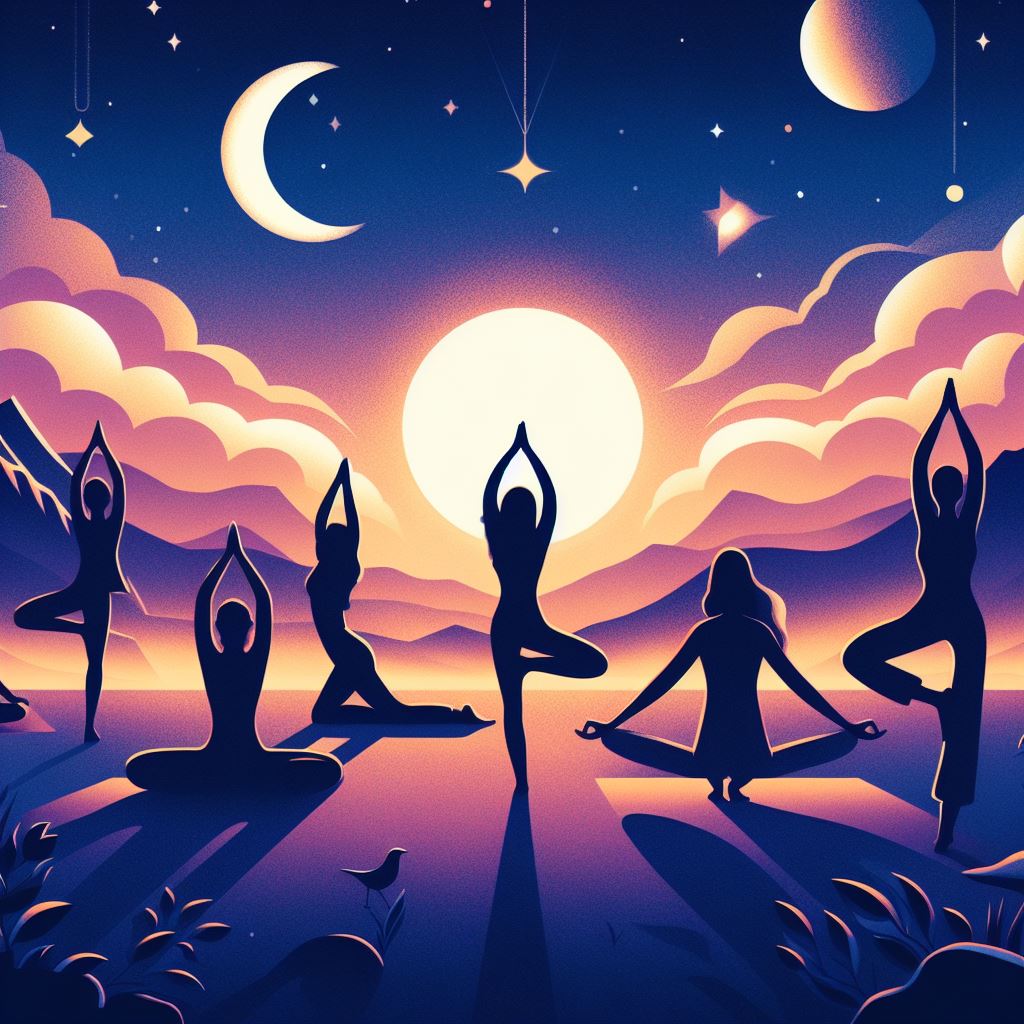
In the realm of wellness and self-improvement, yoga stands as a beacon of hope and transformation. But beyond the physical postures and breathwork, there lies a rich tapestry of philosophical wisdom waiting to be explored. In this exploration, we delve into the heart of yoga philosophy, unlocking its profound concepts to elevate your practice and life.
The Pillars of Yoga: More Than Just Poses
Yoga, in its truest essence, is far more than a series of postures and physical exercises. It is a profound journey of the soul, a path that leads far beyond the realms of physical flexibility and strength. At the heart of yoga lies a quest for spiritual enlightenment, a deep and enduring journey that is guided by timeless and foundational principles. These principles, enshrined in ancient wisdom, provide us with a sacred roadmap, one that leads us toward inner peace, heightened self-awareness, and a deeper connection with the universe.
The pillars of yoga are like guiding stars in the night sky, illuminating our path with their radiant wisdom. They teach us that yoga is not just about the alignment of our bodies, but about the alignment of our hearts and minds with a higher purpose. Yoga invites us to explore the depths of our being, to uncover the layers of our consciousness, and to awaken to the true potential that resides within us.
At the core of these pillars is the practice of self-reflection and meditation. This practice is not merely a quiet sitting or a withdrawal from the world; it is an active engagement with our innermost thoughts and emotions. Meditation in yoga is a journey inward, a chance to listen to the whispers of our soul and to understand the language of our deeper selves. It’s about finding stillness in the chaos, clarity in the confusion, and wisdom in the silence.
Another key pillar is the practice of breath control or pranayama. This is not just about regulating our breathing; it’s about understanding and harnessing the life force that flows within us. Pranayama teaches us to ride the waves of our breath, and to find balance and harmony in its rhythm. It’s a practice that nourishes our body, calms our mind, and rejuvenates our spirit, connecting us to the vital essence of life itself.
The principles of yoga also emphasize the importance of living a life of integrity, compassion, and selfless service. Yoga is not just practiced on the mat but lived in every moment of our lives. It teaches us to act with kindness, to speak with truth, and to engage with the world with an open and compassionate heart. Through yoga, we learn that our actions, no matter how small, can have a profound impact on the world around us.
Moreover, yoga encourages us to embrace life in all its diversity and complexity. It teaches us to welcome both joy and sorrow, gain and loss, with equanimity. This acceptance is not a passive resignation but a courageous embrace of life’s full spectrum. Yoga shows us that every experience, be it pleasant or challenging, is an opportunity for growth and transformation.
In essence, the pillars of yoga invite us on a transformative journey, one that transcends the physical aspects of the practice. It’s a journey that leads us to the discovery of our authentic selves, to the realization of our interconnectedness with all beings, and to the experience of a profound inner peace that radiates outward. As we walk this path, we uncover the true essence of yoga – a union of body, mind, and spirit that illuminates our lives with wisdom, love, and grace.
Exploring Yamas and Niyamas: Ethical Codes of Conduct
At the heart of yoga philosophy lie the Yamas and Niyamas, profound ethical codes that offer more than mere guidelines for conduct. They are the bedrock of a conscious and intentional way of living, deeply impacting how we interact with the world and with ourselves. When we embrace these principles, we don’t just enhance our yoga practice; we initiate a transformative journey that touches every aspect of our lives, infusing them with a deeper sense of respect, integrity, and mindfulness.
The Yamas, often seen as the moral restraints, serve as a compass guiding our actions towards others. They include Ahimsa (non-violence), Satya (truthfulness), Asteya (non-stealing), Brahmacharya (right use of energy), and Aparigraha (non-greed). These principles are not just ethical imperatives; they are invitations to live in harmony with the world. Practicing Ahimsa, for example, means not only abstaining from physical harm but also cultivating an attitude of compassion and empathy towards all beings. Satya goes beyond merely speaking the truth; it’s about being authentic in our words and actions. Each Yama opens a doorway to deeper self-awareness and connection with others, creating ripples of positive change in our lives and communities.
The Niyamas, on the other hand, are personal observances that foster inner growth and self-discipline. They include Saucha (purity), Santosha (contentment), Tapas (discipline or zeal), Svadhyaya (self-study), and Ishvara Pranidhana (surrender to a higher power). These principles guide us in nurturing our inner world. Saucha encourages us to purify our bodies and minds, creating a sanctuary within ourselves. Santosha teaches us the art of contentment, finding joy and peace in the present moment regardless of external circumstances. Through Tapas, we cultivate a fiery dedication to our personal journey, while Svadhyaya invites us to embark on a journey of self-discovery and introspection. Ishvara Pranidhana, the act of surrender, reminds us to release our ego-driven desires and trust in the greater flow of life.
Integrating the Yamas and Niyamas into our daily lives is a practice of mindfulness and intention. It requires us to pause, reflect, and choose actions that align with these higher principles. This mindful approach brings a profound shift in our perspective. We start to see our daily interactions and decisions as opportunities to practice kindness, honesty, generosity, and gratitude. We begin to understand that every thought, word, and action carries energy and intention, shaping our reality and influencing those around us.
Moreover, as we embody these ethical codes, we become beacons of inspiration for others. Our commitment to living a life guided by the Yamas and Niyamas creates an environment of trust, respect, and authenticity. It encourages others to also look within and consider how their actions impact the world.
In essence, the Yamas and Niyamas are much more than a set of rules; they are guiding lights on the path to self-realization and societal harmony. By embracing these ethical codes of conduct, we embark on a transformative journey, one that elevates not only our personal practice but also our collective experience. Let us step forward with open hearts and minds, allowing the wisdom of the Yamas and Niyamas to infuse our lives with deeper meaning, connection, and purpose.
The Concept of Dharma: Finding Your True Purpose
In the transformative world of yoga, the concept of Dharma stands as a beacon, illuminating the path to discovering one’s true purpose. This journey, deeply rooted in the heart of yoga philosophy, is not a quest for external accolades or societal recognition. Instead, it is a profound and personal odyssey towards self-realization, a journey that calls us to align with our deepest truths and to contribute to the world in a way that only we can.
Dharma is about understanding that each of us has a unique role to play in the tapestry of life. It’s about recognizing our individual gifts and using them to serve the greater good. This isn’t about grandiose gestures or seeking the limelight; it’s about finding fulfillment in being authentically ourselves and knowing that this, in itself, is a tremendous contribution to the world.
The pursuit of Dharma asks us to look inward, to listen to the whispers of our soul that often get drowned out in the noise of everyday life. It’s about connecting with our passions, our joys, and our deepest desires. This connection doesn’t happen overnight. It’s a journey that requires patience, introspection, and the courage to question and break free from societal norms and expectations.
In this journey, obstacles and challenges are not roadblocks, but stepping stones. They are opportunities for growth, for learning more about ourselves, and for refining our understanding of our Dharma. Every difficulty we overcome brings us closer to our true essence, sharpening our intuition and guiding us on our path.
Embracing our Dharma also means embracing change. As we evolve, so too may our understanding of our purpose. This fluidity is not a sign of failure or indecision; it’s a natural part of the human experience. Our Dharma at twenty may look different from our Dharma at fifty, and that’s okay. What matters is the continuous alignment with our inner truth, whatever form it may take at different stages of our lives.
Finding our Dharma is not a solitary journey. It involves connecting with others, learning from their experiences, and allowing our interactions to enrich and guide our understanding of our purpose. It’s about building a community that supports and uplifts, where sharing our journey inspires others to embark on their own.
The concept of Dharma in yoga is a heartfelt invitation to embark on the most important journey of all – the journey to ourselves. It’s about uncovering our authentic selves and sharing that authenticity with the world. It’s a journey that asks for bravery, vulnerability, and the willingness to embrace both our strengths and our imperfections.
As we walk this path, we find that our true purpose isn’t just about personal fulfillment; it’s about how we can make the world a better, brighter place simply by being our true selves. In this, we find the greatest joy and the deepest meaning of life. Let us embrace our Dharma with open hearts, for in doing so, we light the way not only for ourselves but for others as well.
Integrating Yoga Philosophy into Daily Life
Yoga philosophy transcends the confines of the mat, blossoming into a holistic way of life that reshapes our very essence. This ancient wisdom, steeped in profound truths, offers more than physical well-being; it is a compass guiding us through the tumultuous seas of life. By embracing the values and attitudes embedded in yoga philosophy, we don’t just change our routines; we transform our worldview, influencing every interaction and decision with newfound depth and meaning.
At the heart of integrating yoga philosophy into daily life is the practice of mindfulness. This isn’t just a trend or a buzzword; it’s a profound commitment to being present in every moment. Whether we’re savoring a meal, engaging in conversation, or simply walking, mindfulness invites us to experience life fully, without the distractions that often cloud our joy and peace.
Moreover, the principles of Ahimsa (non-violence) and Satya (truthfulness) encourage us to interact with others and ourselves with compassion and honesty. Imagine a world where our words and actions stem from a place of love and integrity. Such a world isn’t a utopian fantasy; it’s a tangible reality we create through the daily application of these principles.
Incorporating yoga philosophy into our lives also means embracing contentment (Santosha). In a world constantly chasing more, Santosha teaches us the art of finding joy in what we have. It’s about appreciating the small miracles of everyday life—the warmth of the sun, the smile of a loved one, the quiet moments of reflection. This shift in perspective is not just refreshing; it’s revolutionary.
Furthermore, the practice of self-discipline (Tapas) empowers us to pursue our goals with dedication and perseverance. Whether it’s advancing in our careers, nurturing relationships, or personal growth, the disciplined approach encouraged by yoga philosophy helps us to realize our potential and overcome obstacles with grace and resilience.
Finally, surrender (Ishvara Pranidhana) reminds us of the importance of letting go. In our quest for control, we often forget that some things are beyond our grasp. Surrender is not about defeat; it’s about recognizing that there’s a flow to life, a rhythm that we can attune to for peace and harmony.
Integrating yoga philosophy into daily life is not a task; it’s a journey toward a more meaningful and fulfilling existence. It’s about finding balance, harmony, and joy in the ordinary, transforming our everyday experiences into extraordinary moments of insight and connection. This journey invites us to look within and discover the vast reservoirs of wisdom that can guide us to a life of depth, purpose, and serenity. Let us walk this path with open hearts and minds, allowing the timeless teachings of yoga to illuminate our way.
Conclusion: A Path to Inner Peace and Enlightenment
Yoga philosophy offers much more than physical benefits. It provides a comprehensive guide to living a balanced, ethical, and purposeful life. By embracing its principles, we embark on a transformative journey, one that leads us to inner peace, heightened awareness, and ultimate enlightenment. Let this journey redefine your practice and life, guiding you toward a richer, more connected existence.



